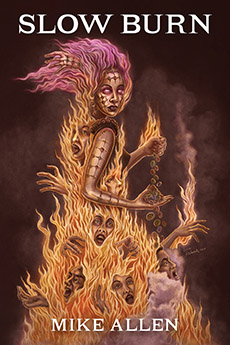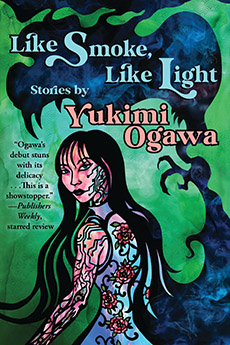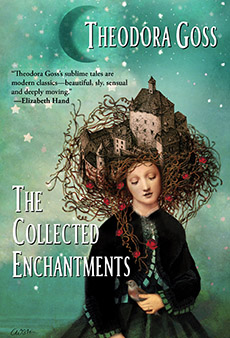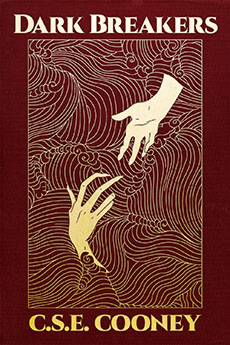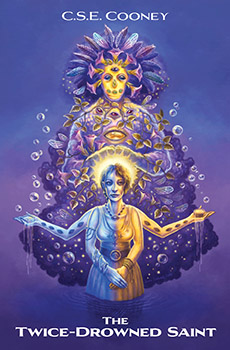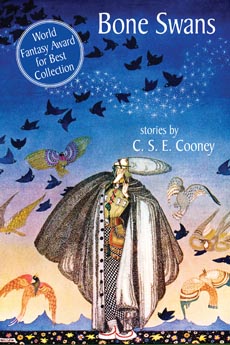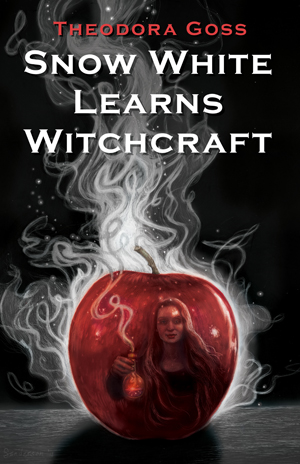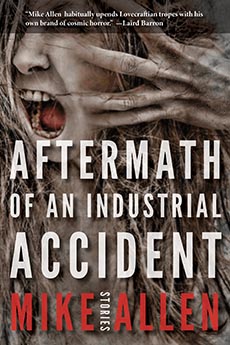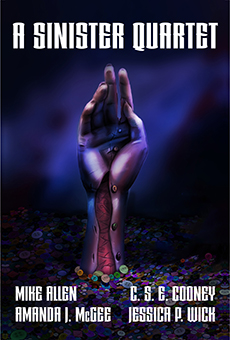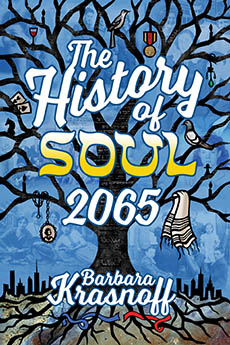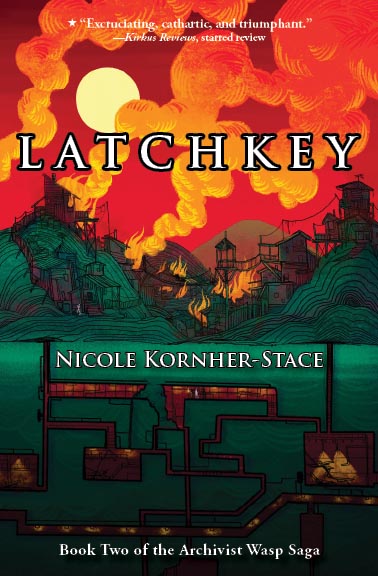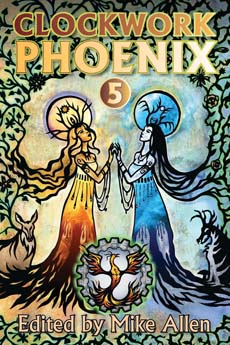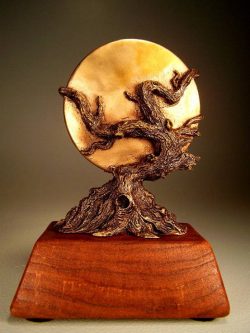CLOCKWORK PHOENIX 3:
New Tales of Beauty and Strangeness
New Tales of Beauty and Strangeness
“The Gospel of Nachash” by Marie Brennan | “Braiding the Ghosts” by C.S.E. Cooney
“Surrogates” by Cat Rambo
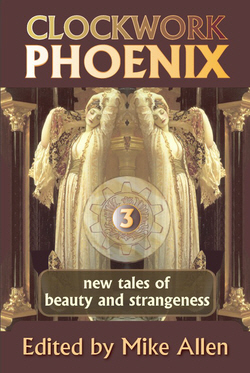
|

|
|
Order now
AMAZON AMAZON UK AMAZON DE AMAZON FR WEIGHTLESS BOOKS NOOK ITUNES KOBO GOOGLE PLAY SCRIBD SMASHWORDS Buy the paperback Amazon Check out these links Read Shweta Narayan’s story “Eyes of Carven Emerald” from CLOCKWORK PHOENIX 3 free at SF Signal (click here). Read Kenneth Schneyer’s story “Lineage” from CLOCKWORK PHOENIX 3 free at Fantasy Book Critic (click here).
|
Praise for CLOCKWORK PHOENIX 3 . . . .Allen’s third volume of extraordinary short stories reaches new heights of rarity and wonder. Marie Brennan sets the bar high with “The Gospel of Nachash,” a fine reinterpretation of the Adam and Eve legend from a fresh perspective. Tori Truslow’s scholarly “Tomorrow Is Saint Valentine’s Day” tells the story of the Great Ice Train and its encounter with the merfolk on the Moon. Gemma Files’s “Hell Friend” and C.S.E. Cooney’s “Braiding the Ghosts” are sinister, spine-tingling ghost stories. Cat Rambo deals with realism and escapism in her futuristic “Surrogates,” where appearances and reality are mutable. Shweta Narayan’s “Eyes of Carven Emerald” eloquently rewrites the history of Alexander the Great to include mechanical entities. Without a wrong note, all the stories in this anthology admirably fulfill Allen’s promise of “beauty and strangeness.” With a balance of new names and established authors, the third Clockwork Phoenix installment collects some magnificent interpretations of fantastic ideas. “The Gospel of Nachash” opens, Marie Brennan’s haunting tale of the beginning of time, and a very interesting reinterpretation of a gospel it is, too. Tanith Lee’s “Fold” is a story of a man who wrote love letters to the people he saw passing beneath his window, and only left his apartment once. Gemma Files’ “Hell Friend” is really a heart-warming ghost story; Georgina Bruce’s “Crow Voodoo” is an unnerving take on something common to fairy tales; and Gregory Frost’s “Lucyna’s Gaze” starts off sweet, and grows more awful with every revealed detail. Clockwork Phoenix delivers on its promise of both beauty and strangeness, and adds in some fright and a few new ways of looking at old tropes. All in all, it’s a very successful collection of thematically similar, but wildly varied in subject, works. CLOCKWORK PHOENIX is a series of anthologies from Norilana Books, edited by Mike Allen, that bears the subtitle “New Tales of Beauty and Strangeness”. This seems a quite appropriate subtitle — the stories really do seem attempts at evoking both beauty and the strange. This makes them consistently interesting . . . There is a mixture of wild science fiction (as with John C. Wright’s “Murder in Metachronopolis”, a convoluted time travel mystery) with what seems best called slipstream (say, Tanith Lee’s curious “Fold”, about a man who sends people paper airplane love letters) with out and out fantasy. One of the latter is my favorite here: C. S. E. Cooney’s “Braiding the Ghosts”, in which a girl goes to her grandmother after her mother’s death, and learns from the older woman the secret of “braiding” ghosts — which is to say enslaving them. So ghosts are the servants of the older woman. But the girl is not so happy with this . . . especially when she falls for the ghost she is forced to braid. And the ghosts — are they happy? Read the story and find out . . . lovely stuff. For the past three years editor Mike Allen has been publishing his unique CLOCKWORK PHOENIX anthologies, inviting authors like Tanith Lee and Catherynne M. Valente to give us their take on the concepts of, as the title has it, “beauty and strangeness.” The result has been a critical and artistic success and, if volume three is any indication, the spell won’t be lifting any time soon. Allen continues to assemble some of the most adventurous, beauteous, and just plain weird stuff our current crop of speculative authors are capable of producing. Adventurous minds are invited to attend. |
. . . And more praise for CLOCKWORK PHOENIX 3 authors . . .
|
Starts with language that is familiar to anyone who grew up on Sunday School stories and Bible readings — yet we do not get even a paragraph in before we realize that things are oddly skewed, that this is not the Creation story we remember. Marie Brennan’s “The Gospel of Nachash,” an alternative version of Genesis featuring a lovelorn Satan figure, gets more haunting the longer you mull it over. (Strange Horizons)
Tori Truslow gives us a rich fantasy of a world in which the cosmology of the Middle Ages is in fact true, in which merfolk migrate seasonally between the earth and the moon, which far from being an airless rock is a wet world of water-laden atmosphere. Carefully documented from fictional letters of that other world, it tells the story of a Victorian explorer who travelled aboard a train made of ice to visit the mer-city upon the moon, where he became enraptured with a lovely young mermaid whom he named Opal … When we read it, we are left with a sense of realness that confounds our knowledge of actual history, so effective is the mechanism of scholarly documentation employed by the author to create the illusion of a history rather than merely a story. (Billion-Year Book Shelf)
Takes us into the grim lands of horror, telling the story of a magical being known as a midnight crow, a supernatural being who has the characteristics of a corvid yet has an intellect equal to any human, if not superior to it (think the Japanese tengu, but more sinister). He practices dark magic, and as the price of one such working he has taken a little girl to raise, teaching her his magical arts. … This is a story that makes me shudder every time I read it. (Billion-Year Book Shelf)
The story of two lovers, Clancy and Eve, who live out their romance through the dreams of sleeping humans is clouded in mystery. It’s hard to say much without ruining the ending, but their love affair is passionate and moving and the story was very well written. …
This story draws upon Chinese tradition of the purchase of magical Hell stuff that is subsequently burned to send it to Hell for one’s ancestors to enjoy while there … Jin belongs to a family who makes such Hell-stuff, carefully crafting beautiful replicas of houses, cars and other consumer goods all year long so that they may be purchased during the Month of the Hungry Ghosts and burned in a splendid ceremony … she lives in modern Canada, to which her family immigrated. Furthermore, her mother was Korean, which makes her grandmother certain that she is irreparably flawed. This perpetual living on the edge of boundaries has led her to become somewhat secretly rebellious, such that she indulges some dangerous curiosity — yet at the same time there’s a strong desire in her to run away, one that leaves her dangerously open to the supernatural in the Month of the Hungry Ghosts. (Billion-Year Book Shelf) Gemma Files’s evocative “Hell Friend” has, as its root, a basic lonely teenager story: young Jin is obsessed with Twilight and the latest screen heartthrobs—but she is also a Chinese American whose family fully participates in the ritual of Hungry Ghost Month. Files uses the divisive nature of Jin’s situation—that of a young person clashing with the beliefs of their elders—to underscore feelings of horror and isolation when those same beliefs lead Jin to an encounter in the world of the dead, but none of this unfurls in the expected narrative fashion. (Strange Horizons)
Selected for The Year’s Best Science Fiction& Fantasy 2011 Edition edited by Rich Horton Selected for the Locus Magazine2010 Recommended Reading List Another of my favorite stories here. The story of a young girl, Nin, who grows up under the tutelage of her dominating grandma, Reshka, this is another ghost story about people who learn to use magic to control ghosts and make them their servants. While learning about this process from Reshka, Nin maintains a dialogue with the spirit of her dead mother, Noir, who is a far more sympathetic and encouraging personage than her grandmother. … The relationships between Nin and her main companions, Mason and Reshka, are well developed and contrasting, and I found Nin’s point of view very strongly pulling me into the mind of a young girl … Cooney did a great job of selling me on a story with a subject matter I wouldn’t generally find intriguing … Recommended. (Tangent Online)
In this future, everyone is entitled to a Surrogate, a sort of android stand-in that does all the unpleasant tasks of life, and is available for certain other services as well. … the straitlaced will probably find the countercultural morés disturbing, but it’s a very interesting extrapolation of the social consequences of robotization that resonates with some of the things Marshall Brain has been discussing. And that may be the coolest part of it — envisioning a world in which the existence of sophisticated humanoid robots means greater freedom and self-actualization for human beings. (Billion-Year Book Shelf) Cat Rambo’s tart “Surrogates” … satirizes our dependence on entertainment and its associate technologies by having its heroine fiddle with an implanted “insanity chip.” (Strange Horizons)
The strongest story in the anthology overall . . . a disquieting story of future genocide that dances on the razor-edge between science fiction and fantasy. (Gardner Dozois, Locus) The protagonists are fighting valiantly against a conquering enemy every bit as vicious as Nazi Germany or the Soviet Union, but with equipment so far in advance of the Primary World’s that it is clearly not either of them. Yet even as these brave characters face an act of genocide, there is a glimmer of hope for humanity in love that refuses to be crushed. (Billion-Year Book Shelf) |
The commander, Alexandros, has conquered a Persian city and there encounters a mechanical owl. The owl begins telling Alexandros the story of a prince who falls in love with a mechanical woman. … The twists of the owl’s story’s plot diverge from what he and we might expect as does his relationship with the owl, which unfolds over several encounters through several years.
The tale of a man who lives in a conquered land inhabited by American dragons is a nice mix of historical setting with fantasy elements. … I thought this was a different take on the dragon idea than I’d seen before. I enjoyed Anselm, who was developed well, and his interactions with his family and classmates were believable. The story takes some surprising but plausible twists and turns and winds up in a hopeful place … Recommended. (Tangent Online) A poignant bit of alternative history in which a socialist boy pines for dragons “green as dollar bills” who smell of “hamburgers, hotdogs, buttered popcorn, and beer.” (Strange Horizons)
The protagonists are a second-generation civilization living amidst the ruins of the civilization of the half-remembered Ghosts. As the story progresses with the accumulation of myriad tiny clues, we realize that the Ghosts are humanity, now extinct, and the new civilization who ponder the hidden workings of the universe are of canine origin … their canine way of thinking and looking at the world fulfills John W. Campbell’s famous dictum to ‘give me a creature that thinks as well as a man, but not like a man.’ And oddly enough, while so many after-humanity stories are relentlessly grim, there’s something warm and homey about the notion of the earth being inherited by our tail-wagging friends. (Billion-Year Book Shelf)
Ancient people saw the world as filled with spirit beings who could guide and strengthen mortals in their times of need. We rational moderns have discounted such notions as primitive superstition, but in Kenneth Schneyer’s “Lineage” a group of scientists discover artifacts from vastly disparate regions and times which all bear the resonance pattern that indicate their having been handled by the same entity. Behind this seeming impossibility lies the story of an elemental spirit of courage and self-sacrifice — but to say more would be to spoil the story. (Billion-Year Book Shelf)
A hugely complex time-paradox tale, the best SF story in the book. (Gardner Dozois, Locus)
One of those rare stories I knew I’d love after the first paragraph. A private eye story, with definite echoes of a noir P.I. film, set in a time travelling future where Masters of Time whisk through time without concern for the possible impact, men like Jacob Frontino act as both investigator and policeman of those Masters who abuse time travel for their own ends. …
Just as time travel can produce several stories out of the same event, Wright crafts several narratives out of his premise: the one he initially gives us, in which events and possible events are told out of order through a series of thirty “chapters,” a second narrative with a completely different tone that is revealed by reading the chapters sequentially, and an implied Choose Your Own Adventure option, which results in an infinitely entertaining mish-mash. Nice trick, that. But Wright isn’t done. His grasp of character—and of the moral dilemmas inherent in playing around with time—are no less keen.
Selected for The Mammoth Book of Steampunkedited by Sean Wallace
I loved her debut novel Desideria. And indeed the story has the same beautiful style that makes one lose himself in the story and wishes for it to continue for a long time … The main characters are a Lady Explorer and her son, who have been travelling around on a stolen airship on various adventures, fighting off repeated predictions of their impending deaths … a good read and recommended. (Tangent Online)
The anthology ends on a high note with Tanith Lee’s wondrous “Fold,” the story of a man who lives the last decades of his life alone in a self-sufficient apartment atop a tower. … His sole source of interaction with the world is through the love letters he writes to passersby on the sidewalk below who catch his interest and capture his heart. … In a beautiful city on the border of a vertical sea, Jintha closed himself up in an apartment in a high tower and for decades wrote love letters to the people he saw passing on the street below. Letters which he then folded into the form of birds which he launched into the air … And then, at the close of this peculiar life, he wrote his final love letter to all the city, one so extraordinary in its nature that to even begin to describe it would be to spoil this wonderful, delicate story. (Billion-Year Book Shelf) |

